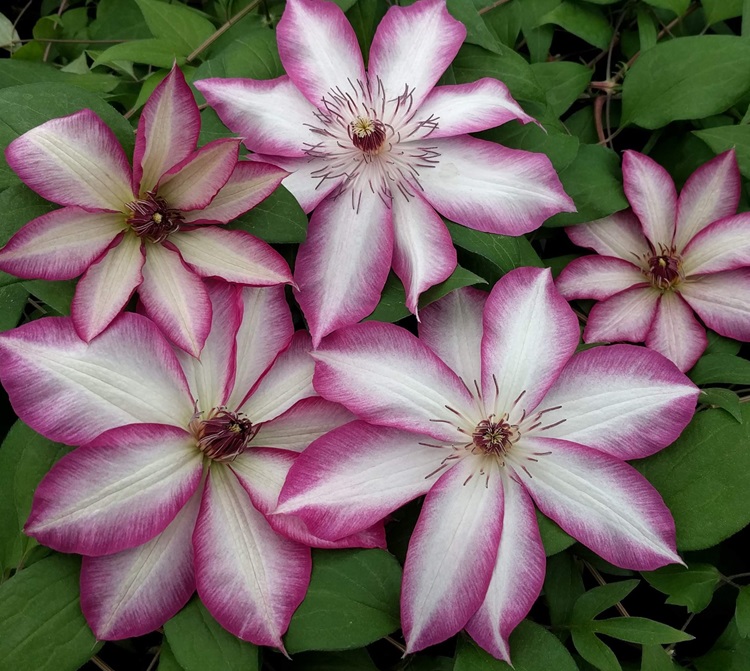Using Clematis on the Web
The naming of clematis in this database conforms closely to the recommendations of the Royal Horticultural Society in the UK which is now the international registration authority for clematis. The publication of The International Clematis Register and Checklist 2002 has resulted in the reclassification of many clematis.
Clematis are listed under the name used in the UK. Where a significantly different name is in widespread use elsewhere it is given in brackets so that a search will still find it – for instance ‘Dorothy Walton’ (‘Bagatelle’). Our ‘Name’ search checks both the ‘name’ and ‘synonyms’ areas of the database.
Searching
1 To aid searching, we do not use full stops (periods) in clematis names. Accents on letters should not be used whilst searching.
2 If a search for a named clematis doesn’t find what you want, search again with only a major part of the name (for instance use ‘Baron’ rather than ‘Madame Baron Veillard’ – are you sure it’s not ‘Mme’ or ‘Viellard’?)
Conventions used
1 Where a date is given for ‘raised’, this is sometimes qualified as follows: ‘c’ for ‘about’, ‘r’ for ‘raised’, ‘n’ for ‘named’. Thus ‘rc1980, n1990’ is ‘raised about 1980 and named in 1990. Where a single date is given it is our assumption that the variety was raised and named in the same year.
2 Months quoted (for flowering time etc) are typical of the UK. Elsewhere in the northern hemisphere there may be slight differences. Users of ‘Clematis on the Web’ in the southern hemisphere need to make a six-month adjustment.
3 All measurements shown on our pages are approximate. The precise conditions under which a clematis is grown can make a considerable difference to some of these.

